Imagine playing a gig where the keyboardist suddenly switches key, and amidst the rapid melody changes, you’re left in the dust—or at least you would have been, if not for one game-changer: the Nashville Number System. It’s a fascinating piece of music theory that converts the complexity of songs into a simple, shorthand music notation. I remember the first time I truly understood its power; it was like unlocking a new dimension of musical fluency and communication with my bandmates.
As a guitar educator, I’ve seen how this system can transform the way musicians collaborate, making it indispensable for anyone serious about navigating the contemporary music scene. What is this magical notation system, and how can you harness it to enhance your playing? Let me take you on a journey through the essential mechanics and applications of the Nashville Number System, ensuring you’re never caught off guard again.
What is the Nashville Number System?
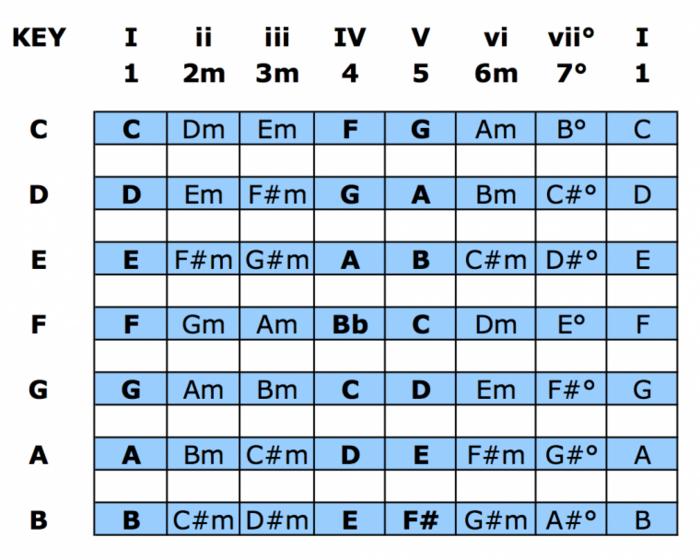
What if there was a way to represent music that transcends language barriers? As a guitarist steeped in the world of music theory, this idea isn’t just intriguing—it’s transformative. My journey has shown me that the Nashville Number System (NNS) is precisely that: a universal language designed to make musical collaboration as fluid as possible. For those who are stepping into this world for the first time, let me share my insights.
The Nashville Number System is like a map, guiding musicians through the landscape of a song using numbers instead of traditional chord symbols. This numerical abstraction is powerful; it not only makes transposing songs into different keys seamlessly easy but also opens doors to dynamic and spontaneous arrangements. When I first encountered NNS as a budding guitarist, its simplicity struck me. By using numbers to denote chords relative to the key’s tonic, I found myself freed from the confines of memorizing countless chord names across various keys.
In essence, the NNS is akin to a universal translator. It allows musicians from diverse backgrounds and languages to communicate fluently. It’s an indispensable tool for any guitarist looking to expand their skills beyond rote memorization, offering a streamlined path to understanding and executing music with others, effortlessly adapting to whatever musical environment they find themselves in. Embracing this system has profoundly enhanced my approach to collaboration, and I believe it can do the same for you.
Why Use the Nashville Number System?
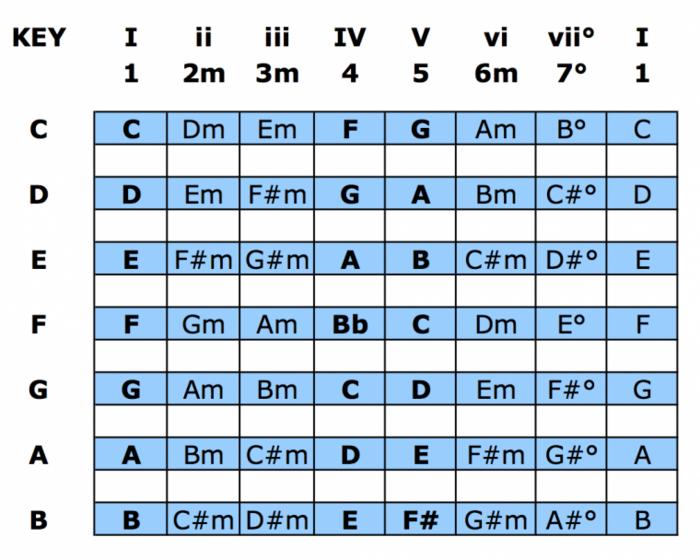
From my experience as an editor at Guitar One, I understand how efficient the Nashville Number System can be for quick music communication in jam sessions. Imagine being able to play with any musician in any style without the need for lengthy chord charts! This system grants musicians the flexibility to adapt to various musical settings by using numbers to represent chords relative to the key.
Over the years, I’ve seen how this numerical approach streamlines communication among musicians. By using numbers instead of specific chord names, it’s easier to transpose music on the fly. This adaptability is invaluable when jamming with a new group or session musicians who might all be playing in different keys.
The Nashville Number System isn’t just for country music—it’s a universal language. Whether you’re playing blues, rock, or jazz, this system allows for seamless collaboration. The concise notation reduces rehearsal times and helps musicians focus on the music rather than deciphering complicated chord progressions. I’ve often watched as entire jam sessions come alive with newfound energy, thanks to the clarity and simplicity this system provides.
Ultimately, adopting the Nashville Number System empowers guitarists and musicians alike to elevate their playing, effortlessly opening doors to creative expression and collaboration across genres.
Who Uses the Nashville Number System?
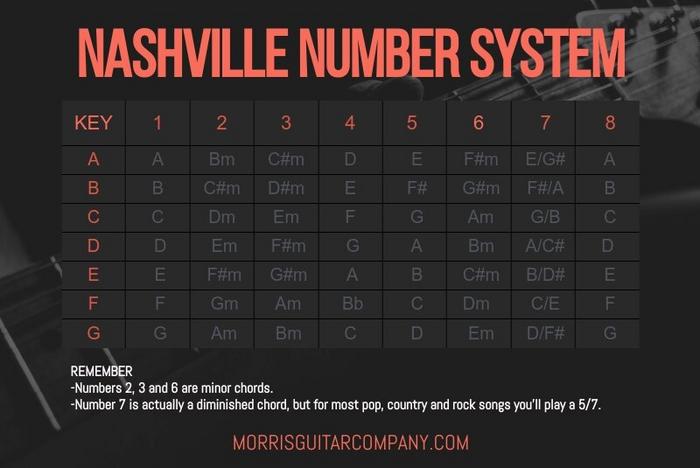
During my career, I’ve had the privilege of collaborating with numerous artists who lean heavily on the Nashville Number System, a testament to its importance across a wide spectrum of music genres. Which major artists and genres have embraced this unique system to great effect? It’s used extensively in country music, the genre most commonly associated with Nashville itself. However, don’t be fooled into thinking its influence stops there. Major pop and rock artists, even jazz musicians, have recognized its powerful simplicity.
My experiences in the studio have shown me how proficiently session musicians from different backgrounds communicate using this system. It transcends genres, offering a musical shorthand that saves both time and effort while enhancing creativity. I’ve seen firsthand how artists like Garth Brooks and Shania Twain harness its potential, seamlessly transitioning from improvisation to structured creativity. As you dive deeper into understanding this system, remember its versatility opens doors, connecting musicians across diverse musical landscapes.
How to Read Nashville Numbers
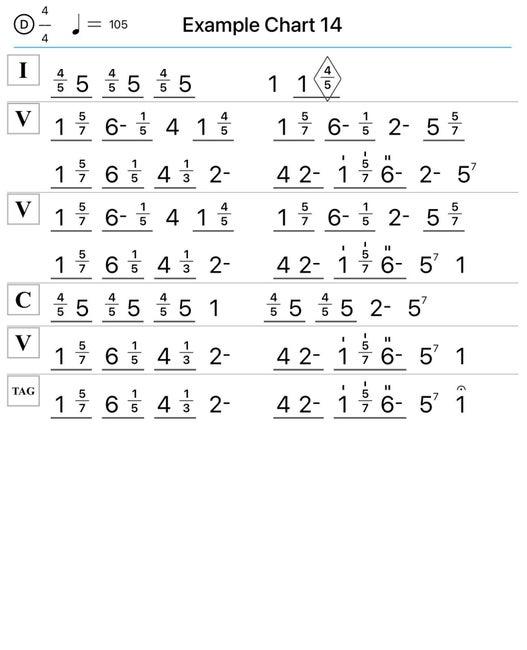
Are you ready to unlock a new way to read music that can enhance your guitar playing skills? As someone who has developed numerous guitar practice routines, I can attest that mastering the Nashville Number System can significantly accelerate your musical learning curve. In this step-by-step guide, I’ll walk you through reading Nashville Numbers, a method that has changed the game for countless musicians, myself included.
The first step in understanding the Nashville Number System is to familiarize yourself with its core principle: substituting numbers for chords. Each number represents a degree of the scale; ‘1’ is the root, ‘2’ is the second note in the scale, and so on. It’s as if each number is a placeholder that can adapt to any key, granting immense flexibility in musical situations.
One of my first encounters with the Nashville Number System was during a jam session in Nashville, where improvisation and quick thinking were crucial. I noticed how effortlessly seasoned players moved between songs by simply communicating through numbers. It clicked for me—this system transcends individual songs or styles, offering a universal language among musicians.
Let’s dive into an example. Suppose we’re in the key of G major: 1 would be G, 4 would be C, and 5 would be D. If a song follows a 1-4-5 progression, you play G, C, and D chords. You’ll find this pattern repeating in countless songs, so recognizing it can immensely streamline your learning process.
In essence, by embracing the Nashville Number System, you open doors to more spontaneous, creative playing. Stay tuned, as we’ll explore how to take this newfound knowledge into your daily guitar practice.
Using the Nashville Number System in Practice
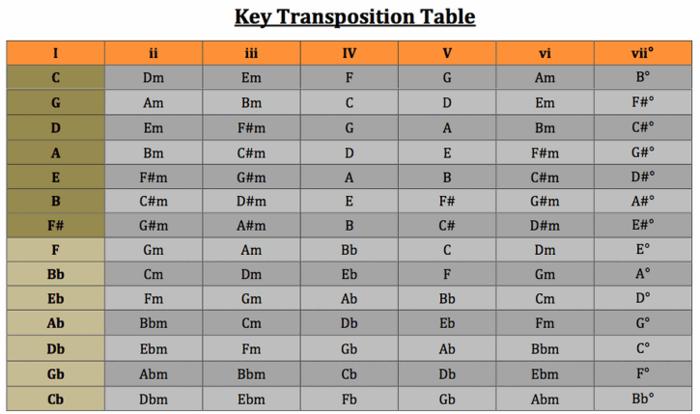
As someone who’s not only played countless gigs but also edited a wealth of instructional content for guitarists, I can confidently say that understanding the intricacies of music theory can be daunting. Yet, there’s one tool that consistently stands out in its simplicity and effectiveness: the Nashville Number System. How can a simple numbering system transform your live performances and jam sessions?
Let’s dive into how this transformation occurs. Imagine you’re on stage, and the bandleader unexpectedly calls a last-minute key change or throws in an additional chord progression. Without the Nashville Number System, chaos could ensue. However, with this system, you’re prepared and flexible. Rather than thinking in rigid chords, you’re interpreting a universal language of numbers that transcends specific keys.
The number system allows me to seamlessly communicate with other musicians, ensuring everyone’s on the same page, regardless of their instrument or musical background. It’s all about using the foundational 1-7 scale degrees to capture the essence of any tune. This method not only streamlines rehearsals but also elevates our live performance chemistry. Every musician involved can instantly grasp the “blueprint” of a song, making impromptu creativity smoother and more synchronized.
The ability to read and adapt to music through this lens has made countless jams and sessions vibrant and dynamic. So, next time you grab your guitar and head into a live gig or a casual jam, remember how the Nashville Number System can unlock a new level of mastery and interaction with your fellow musicians.
Conclusion
Are you ready to take your guitar skills to the next level through the Nashville Number System? As a passionate advocate for guitar education, I urge every guitarist to explore this remarkable tool—it’s truly a game changer for musicians of all levels. Throughout this article, we’ve delved into the basics of Nashville numbers, uncovering its roots in music theory and dissecting its practical applications.
This versatile system not only simplifies transpositions but also enhances your ability to communicate with fellow musicians, bridging gaps across genres. By understanding how to read and apply these numbers, you can unlock a new world of musical possibilities. The beauty of learning the Nashville Number System lies in its ability to evolve your playing style and improve your musicianship.
I challenge you to continue experimenting with this system. Embrace it, practice regularly, and watch your musical landscape broaden. The journey of mastering the Nashville Number System is one of continuous growth and creative discovery.
FAQs
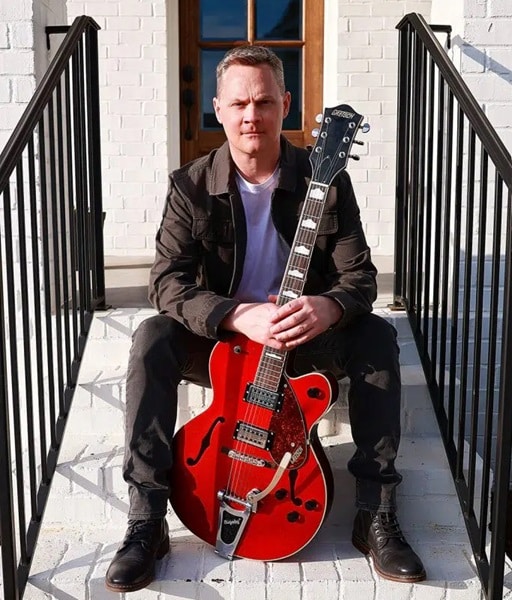
Troy Nelson, a celebrated guitar educator from Viroqua, Wisconsin, has significantly impacted guitar learning with acclaimed books like ‘Guitar Aerobics’ and ‘Fretboard Freedom’. His unique journey from Sports Management to leading roles at Hal Leonard Corporation and Guitar One magazine has shaped his approach to guitar education. Now based in Nashville, Nelson specializes in crafting effective guitar practice routines, enhancing players’ skills and technical mastery. His work is a treasure trove for guitar enthusiasts worldwide.
